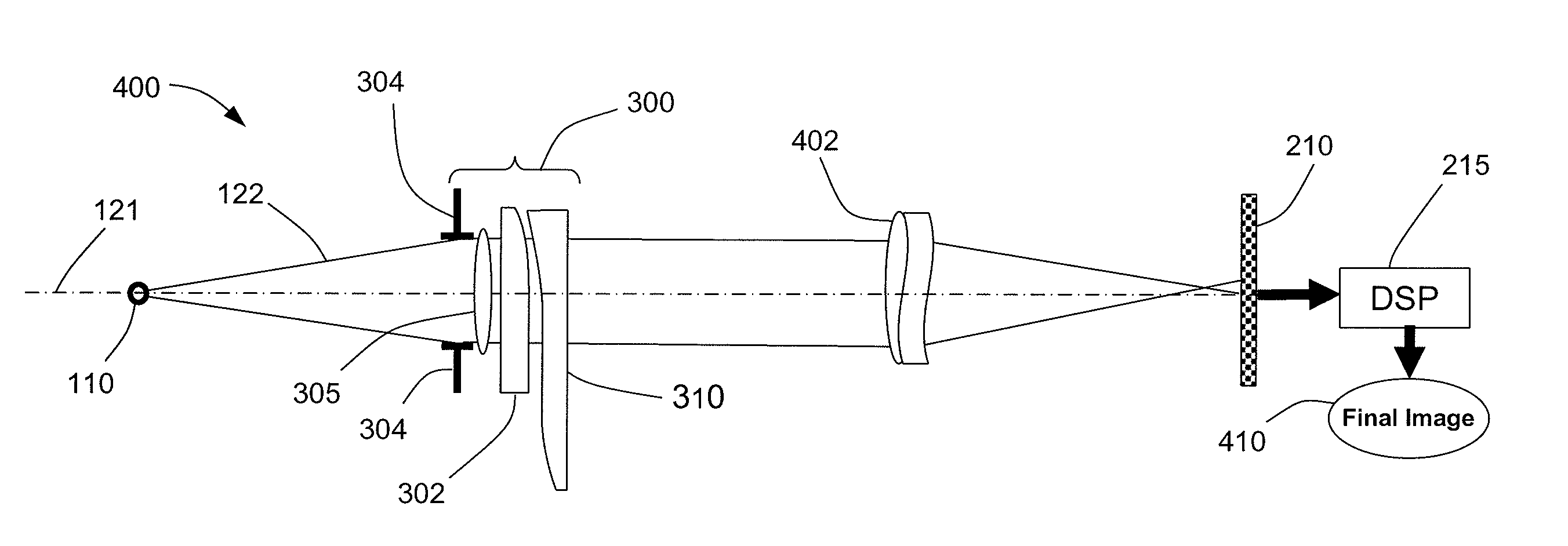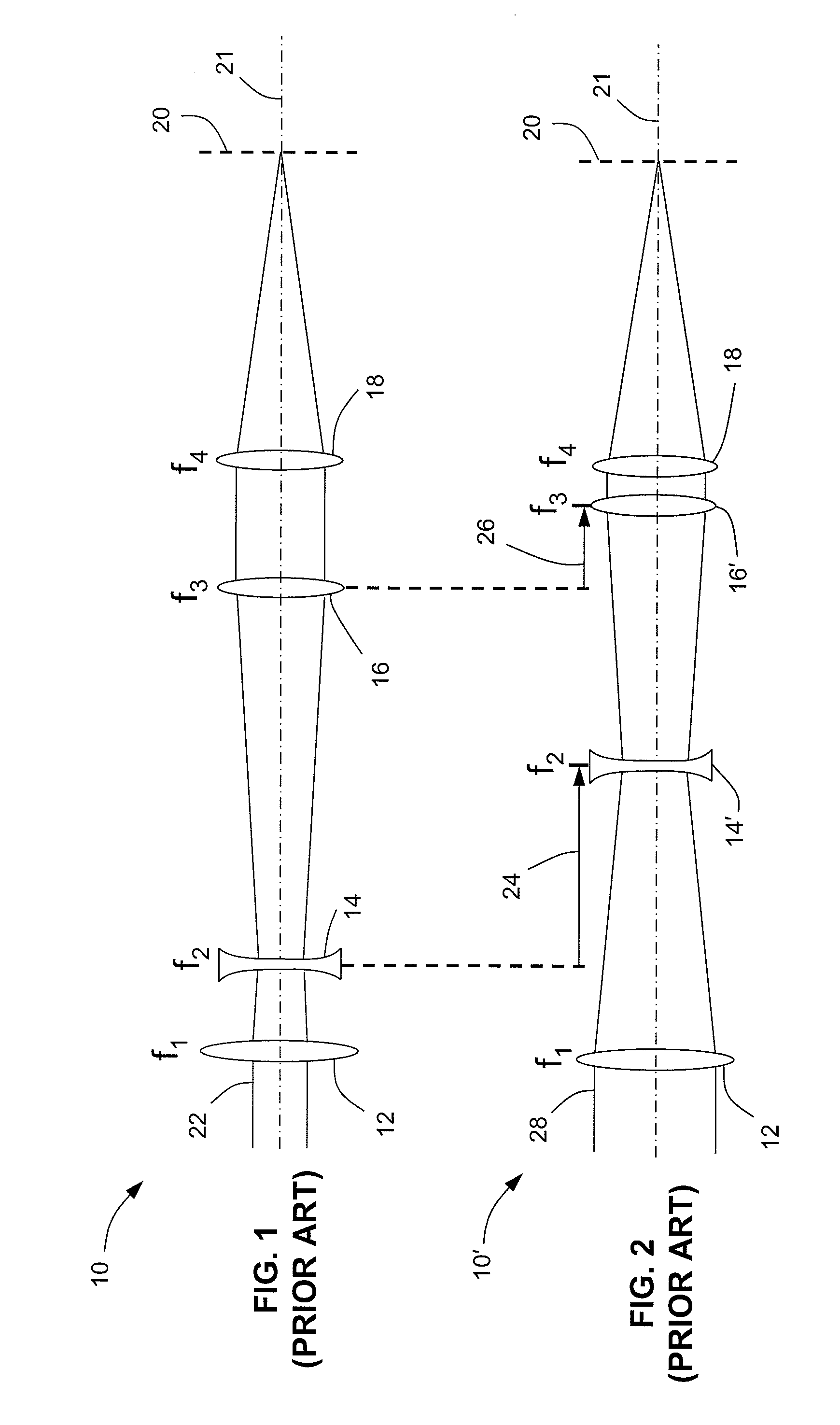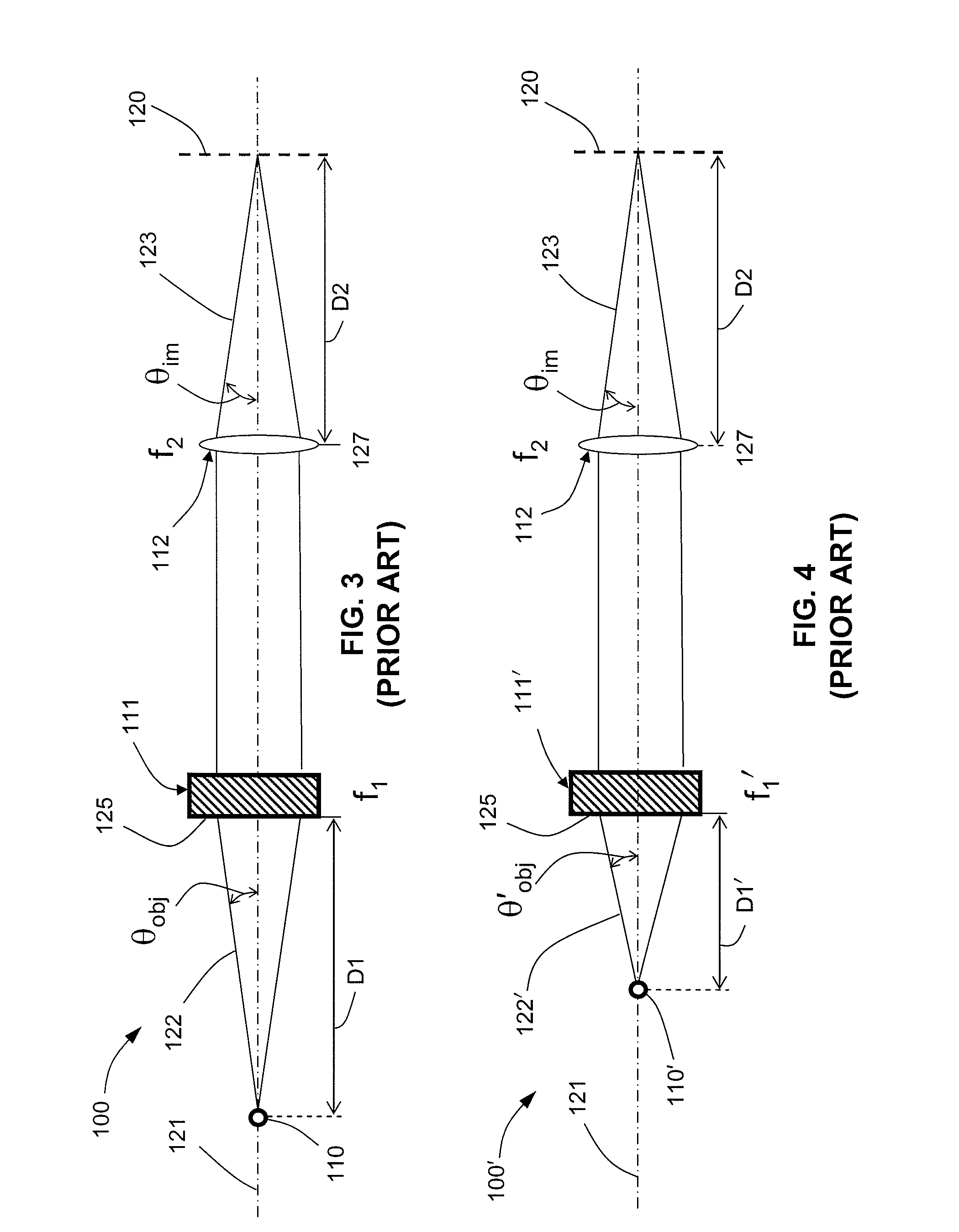Zoom lens systems with wavefront coding
a technology of zoom lens and wavefront, applied in the direction of optical elements, instruments, optical radiation measurement, etc., can solve the problems of limiting imaging performance, aberration, and inability to achieve changes in imaging system
- Summary
- Abstract
- Description
- Claims
- Application Information
AI Technical Summary
Benefits of technology
Problems solved by technology
Method used
Image
Examples
Embodiment Construction
[0047] In the present disclosure, “zoom lens system” and “zoom imaging system” are used interchangeably, and “variable optical element” is intended to encompass optical elements with optical properties (such as, but not limited to, focal length, transmittance, and refractive index) that are modifiable by using techniques such as (but not limited to) application of voltage and / or pressure to one or more of the optical elements, and translation and / or rotation of one or more of the optical elements.
[0048] The use of certain aspheric optics and signal processing may provide improvements to modern zoom lens systems by mitigating certain limitations. The present disclosure concerns the use of certain aspheric optics to improve the performance, cost, and size of modern zoom lens imaging systems. Such optics and signal processing of the detected blurred images, may reduce or eliminate the effects of certain aberrations. Systems utilizing such aspheric optics and signal processing for wave...
PUM
 Login to View More
Login to View More Abstract
Description
Claims
Application Information
 Login to View More
Login to View More - R&D
- Intellectual Property
- Life Sciences
- Materials
- Tech Scout
- Unparalleled Data Quality
- Higher Quality Content
- 60% Fewer Hallucinations
Browse by: Latest US Patents, China's latest patents, Technical Efficacy Thesaurus, Application Domain, Technology Topic, Popular Technical Reports.
© 2025 PatSnap. All rights reserved.Legal|Privacy policy|Modern Slavery Act Transparency Statement|Sitemap|About US| Contact US: help@patsnap.com



